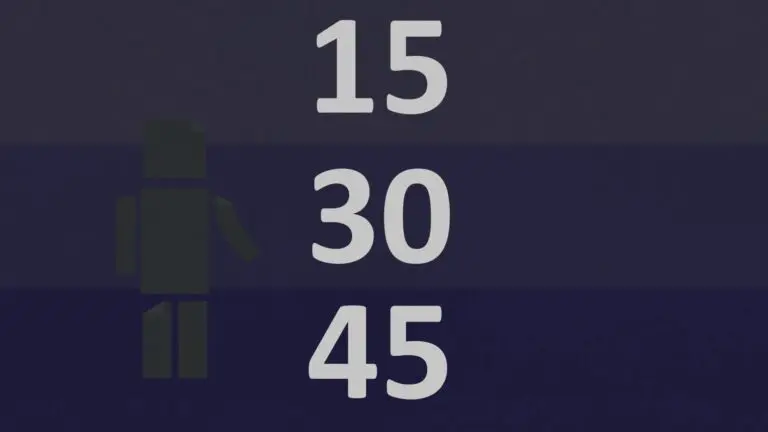Tennis scoring can seem complex, but it’s a crucial part of the game that every player needs to grasp. As a tennis coach and enthusiast, I’ve seen how a clear understanding of the scoring system and match rules significantly benefits players on the court.
My goal is to make these concepts easy to understand and apply, enhancing your confidence and strategy during matches. Whether you’re just starting out or looking to refine your game, this guide is here to help.

Understanding the Scoreboard
The scoreboard displays the current game score, set score, and match score, providing a comprehensive overview of the competition’s status. For newcomers, the unique tennis scoring increments of 15, 30, 40, and game can be perplexing, but with practice and familiarity, interpreting the scoreboard becomes second nature.
In addition to the numerical scores, the scoreboard also indicates which player is serving, a critical piece of information that can influence a player’s approach to the game. Players often have different strengths and weaknesses when serving or receiving, so knowing your position in the rotation helps in planning your next move.

Tennis Scoring: Game
In tennis, game scoring starts at 0, referred to as ‘love’. The first point won is called ’15’, the second ’30’, and the third ’40’. If a player wins four points before their opponent wins three, they win the game.
However, if both players reach ’40’, it’s called a ‘deuce’, and from this point, a player must win two consecutive points to win the game. The player who wins the next point after a deuce is said to have the ‘advantage’. If the player with the advantage wins the next point, they win the game; if they lose it, the score returns to deuce.
It’s crucial for players to maintain focus and strategy during each point of the game, as losing a game can shift momentum in a match. Serving plays a significant role in game play; a strong serve can give a player an edge, while a weak serve can be a vulnerability that opponents exploit.
I always try to encourage players to understand their serving patterns and work on consistency, as well as to pay attention to their opponent’s serving habits to anticipate and prepare for each point.

Tennis Scoring: Set
Progressing from game scoring, a set in tennis is a collection of games played with a specific scoring system to determine the winner. Players must win a certain number of games, typically six, with at least a two-game advantage to secure a set.
Moreover, I emphasize the importance of consistency and resilience in set play, as it requires players to maintain focus and perform well over an extended period.
The set score is crucial in determining the overall match outcome, making each game within the set highly significant. If the set reaches a 6-6 score, a tie-break is usually played to decide the winner of the set.
In a tie-break, players aim to be the first to reach seven points with at least a two-point advantage. Serving in a tie-break follows a specific order, starting with one serve from the player who didn’t serve last in the set, followed by two serves each from the other player, and so on.
Strategic play and mental toughness are key components in set play. Players must be able to quickly recover from lost games and maintain their composure to stay competitive in the set.
I work with players to develop strategies for different opponents and situations, helping them to adapt their play as the set progresses. Additionally, focusing on physical conditioning is vital, as endurance plays a significant role in maintaining performance throughout the set.
Tennis Scoring: Match

The match format can vary, with men’s Grand Slam matches typically being best-of-five sets, while women’s Grand Slam and most other professional matches are best-of-three sets.
As a tennis coach, I stress the importance of endurance and strategic planning across the entire match, as these elements are often the deciding factors in a player’s success.
Winning a tennis match requires a player to win the majority of sets played. This demands consistent performance, strategic adaptability, and mental resilience. Players must be prepared to adjust their strategies based on the flow of the match and their opponent’s strengths and weaknesses.
It’s crucial to capitalize on momentum during winning streaks and to stay mentally strong during challenging moments. I often remind my players that a match isn’t over until the last point is played, encouraging them to fight for every point and stay engaged throughout the entire match.
Physical conditioning is another critical aspect of match play. Tennis matches can last for several hours, especially in five-set formats, requiring players to maintain a high level of fitness.
I emphasize the importance of endurance training and proper recovery to ensure that players can perform at their best for the duration of the match.
Additionally, mastering the intricacies of game and set scoring is essential, as understanding these elements allows players to make informed strategic decisions during critical moments of the match.
What About the Tie-break?

Tie-breaks are a unique and high-pressure aspect of tennis that require a distinct set of skills and mental fortitude. They come into play when a set is evenly matched at 6-6, providing a thrilling climax to determine the set winner.
My main focus is to help players to maintain mental strength and focus during this most-challenging part of the game.
In a tie-break, every point counts, and players must be ready to bring their best performance. The serve becomes an even more crucial element, as holding serve can create significant pressure on the opponent.
Players should aim to be aggressive and take control of points early, especially on their serve. It’s also important to stay calm and composed, as nerves can often play a significant role in tie-breaks.
Strategically, players should pay attention to patterns that have emerged throughout the set and use this information to their advantage in the tie-break. Identifying the opponent’s weaknesses and targeting them can create opportunities to win crucial points. Additionally, being aware of one’s own strengths and playing to them is equally important.
Tennis is as much a mental game as it is a physical one, and developing mental toughness is crucial for success on the court. The ability to stay focused, maintain a positive attitude, and handle pressure are key components of mental toughness in tennis.
As I already mentioned, sometimes it is more difficult for me to educate a player to remain calm and to withstand the pressure than teaching him some skills.
FAQs
How do you score points in a tennis match?
Points in tennis are scored by winning rallies. When a player serves, the opponent must return the ball within the designated court boundaries. If the ball lands out or if a player fails to return it, the opponent scores a point.
Why is tennis scored 15, 30, and 40?
The origins of tennis scoring are somewhat unclear, but one theory is that it’s based on the face of a clock, with 15, 30, and 45 (shortened to 40 for simplicity) representing the minute increments. Another theory suggests it’s derived from the French game “Jeu de Paume” where points were counted by quarters of the total needed to win a game.
How many sets does it take to win a Wimbledon match?
For men’s singles, it takes winning 3 out of 5 sets to win a Wimbledon match. For women’s singles and most other categories, it’s 2 out of 3 sets.
What does 30-40 mean in tennis?
A score of 30-40 means that the server has won 2 points (30) and the receiver has won 3 points (40). The receiver is one point away from winning the game.
Why is 40-40 called deuce?
When both players have scored three points each (40-40), the score is called “deuce”. The term is believed to come from the French word “deux”, meaning “two”, indicating that a player needs to win two consecutive points from deuce to win the game.
Summary
If you are a newbie, it could be difficult to understand all those unique terms and rules. However, you will catch all that after few games. My approach with young players is to start with simple swings, while teaching them some simple rules one by one. The step-by-step approach is always the best.
Related:
- 20 Best Tennis Shoes 2024 - Stylish and Athletic
- Top 19 Best Tennis Bags 2024 [Unbiased Reviews]
- 18 Best Tennis Racquets 2024 - Exclusive Reviews &…
- 15 Best Tennis Racquet for Beginners & Intermediate…
- 15 Best Tennis Balls 2024 - USTA and ITF Approved
- Top 16 Best Pickleball Paddle 2024 - Step Up Your Game











